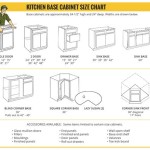How to Grow a Kitchen Garden
A kitchen garden offers a delightful blend of convenience and culinary satisfaction. It allows you to enjoy fresh herbs, vegetables, and fruits right at your doorstep, enriching your meals with vibrant flavors and wholesome goodness. Cultivating a thriving kitchen garden, however, requires a thoughtful approach to ensure optimal growth and bountiful harvests. To help you achieve success, this article outlines essential steps, providing clear guidance on how to grow a kitchen garden.
1. Planning Your Kitchen Garden
Before you start planting, it's crucial to plan your garden layout meticulously. Consider the following aspects:
- **Space:** Assess the available space in your yard or even on your balcony or patio. Determine the size of your garden and allocate specific areas for different plant types.
- **Sunlight:** Most vegetables and herbs require ample sunlight to thrive. Choose a location that receives at least six hours of direct sunlight daily, preferably in the morning.
- **Soil:** The quality of your soil plays a vital role in plant growth. Test your soil to determine its pH level and nutrient content. If needed, amend the soil with compost, manure, or other organic matter to improve its fertility.
- **Water:** Plan for a reliable water source. A garden hose or drip irrigation system will ensure your plants receive adequate moisture, especially during dry spells.
- **Plant Selection:** Choose plants that are well-suited to your climate and growing conditions. Consider your culinary preferences and the space available. Begin with a small selection of easy-to-grow plants, such as lettuce, tomatoes, herbs, and peppers, and gradually expand your selection as you gain experience.
2. Planting Your Kitchen Garden
Once you have a well-prepared garden space, it's time to start planting. Follow these steps for a successful planting process:
- **Seed Starting:** For most vegetable and herb varieties, starting seeds indoors is recommended. Sow seeds in seed trays filled with sterile seed starting mix, providing adequate moisture and warmth. Once seedlings emerge, transplant them outdoors after the last frost has passed.
- **Transplanting:** When transplanting seedlings, gently loosen the roots and handle them carefully. Dig a hole large enough to accommodate the root ball, and backfill with soil, ensuring the base of the seedling is at or slightly above ground level. Water thoroughly to help the roots establish themselves.
- **Spacing:** Provide adequate spacing between plants to allow for proper air circulation and sunlight penetration. Refer to seed packets or plant tags for recommended spacing guidelines.
- **Mulching:** Applying a layer of mulch around plants helps retain moisture, suppress weeds, and regulate soil temperature. Organic mulches, such as straw, wood chips, or shredded leaves, are ideal options.
3. Maintaining Your Kitchen Garden
A successful kitchen garden requires consistent care to ensure its continued health and productivity. Follow these maintenance practices:
- **Watering:** Water your garden regularly, especially during hot and dry weather. Check the soil moisture levels and water deeply but infrequently, allowing the top inch of soil to dry out between watering sessions. Avoid overwatering, as it can lead to root rot and disease.
- **Weeding:** Regularly remove weeds from your garden to prevent them from competing with your plants for nutrients and water. Hand weeding is the most effective method for removing weeds from a small-scale kitchen garden.
- **Fertilizing:** Provide your plants with essential nutrients by applying organic fertilizers, such as compost, manure, or fish emulsion. Follow the directions on the fertilizer packaging for the appropriate application rate and frequency.
- **Pest and Disease Control:** Monitor your plants for signs of pests or diseases. Use organic pest control methods, such as insecticidal soap, neem oil, or beneficial insects to manage pests. For disease issues, consult with a local gardening expert to identify the cause and recommend appropriate treatments.
- **Harvesting:** Harvest your produce at the peak of ripeness. For vegetables, harvest fruits and vegetables at their optimal size and color. For herbs, harvest leaves before they flower to preserve their flavor. Regular harvesting encourages further growth and increases the overall yield of your kitchen garden.
By carefully planning, planting, and maintaining your kitchen garden, you can successfully grow a diverse array of fresh produce, enriching your culinary experience and fostering a connection with nature.

Sow Good Tips To Build Your Own Kitchen Garden Hindustan Times

How To Make A Kitchen Garden Satvic Lifestyle

Kitchen Gardening In The Backyard Start Growing Your Own Food Nvt Quality Lifestyle

How To Develop A Kitchen Garden 7 Steps With Pictures Wikihow

Kitchen Garden Basics How To Start Growing Food Today

How To Grow A Winter Kitchen Garden Modern Farmer

Grow A Kitchen Garden

Crafting Your Kitchen Garden A Simple Step By Guide

Kitchen Gardening At Home A Small Guide Ugaoo

Kitchen Gardening In Build Your Own Garden
Related Posts








